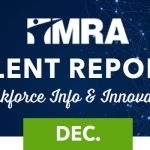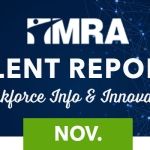As many employers are heading toward open enrollment, both benefit design and cost are top of mind. The COVID-19 pandemic caused health plans to experience reduced utilization and claims brought on by limited access to treatment for nonemergent and chronic medical conditions. Plan enhancements also placed an increased demand and focus on mental health wellness and services and telemedicine options, as well as creative pharmacy programs to address the increasing climb in year-over-year cost for prescription medications. In the wake of the Supreme Court’s decision to overturn Roe v. Wade, many plan sponsors are also looking for guidance on modifying health plans to address the changing needs of employees based on ever-evolving legislation.
Nicole Dahl is an account executive with M3, a benefit broker based in Madison, Wisconsin. M3 has six locations in Wisconsin and one in Rockford, Illinois, and has built a reputation for finding creative, cost-effective, and compliant ways to build benefit plans tailored to fit employers’ business needs, all while helping employers retain their valuable existing employees and attract top talent. Nicole shared some innovative ways she has helped employers strategically design benefit plans in response to recent changes and needs.
Q: What are some of the newer benefits that employers are offering to make total rewards packages more attractive?
A: Total reward approaches have begun incorporating both traditional insurance benefits and cultural solutions. Some of the more popular mid- and post-pandemic additions to insurance coverage include voluntary employee paid coverage options such as critical illness, hospital indemnity, long-term care, identity theft, and pet insurance.
Health insurance options have focused on member access to care. That ranges from onsite or near-site employee health clinics to expanding access to virtual care. The pandemic and limited access to in-person office visits has heightened the need and demand for virtual care, making it easier for people to schedule appointments from anywhere by using a computer or hand-held device with a camera. When employers put additional focus on non-insurance benefits, it demonstrates the larger value of working for that organization. This can come in the form of newer cultural benefits or even existing benefits that haven’t been given a spotlight over the years.
Total reward statements help showcase the value of the benefits offered to each employee and benefit literacy courses help employees understand how to make the most of their benefits. This is an advantage for both the employer and employee and can have a positive impact on utilization trends and claim costs. For example, utilizing virtual appointments rather than emergency room services can cut costs dramatically for both the plan and employee.
Other emerging benefits include:
- Donation of paid time off to other employees for medical appointments.
- Providing creative food options such as food trucks, farm shares, or themed food days.
- Wellness options such as meditation or zen rooms, providing a company game room, or sponsoring participation in clubs that support employee hobbies.
- Coordinating student loan repayments with 401(k) matching contributions.
Q: What is driving most of the plan changes you have seen in recent years?
A: Historically, benefit plan changes have been driven by costs, employment strategies, and employee utilization patterns. The key to truly meeting your goals is to have market data which allows employers to review benefits and costs of like employers in their region, industry, and/or size.
Some of the most common strategies have been adjusting the employee share for premiums, out-of-pocket expenses, and pharmacy benefits. An organization’s strategy often depends upon the health of their employees, budget, and appetite for risk. Regardless of the size of an employer, it is important to offer options when possible. Employees have become more educated about benefits and know to look deeper than just premiums when electing benefits.
Q: What are the most common changes employers have made to contain health care costs?
A: There are a variety of different levers that employers can “pull” to mitigate risk and costs. Onsite or near-site care has become popular for management of ongoing chronic health conditions. Some employers will partner with other small employers in the community to further reduce the cost of staffing and operations of an employee clinic.
Self-insuring health plans has become a more viable option for smaller employers who incorporate using a benefit captive. A benefit captive is formed of like-sized, like-minded employers who collectively purchase stop-loss as a group. It functions similarly to single-employer stop-loss coverage, but multiple small groups share the risk, therefore, leveling the risk volatility of self-insurance that has historically been a deterrent for smaller employers.
Q: Are there any new benefits employers have been considering?
A: We are seeing considerations in two buckets—enhancing benefits and controlling costs.
The first enhancement is offering short-term loans via payroll deductions. This option is great for employees who have not established credit, especially after college when debt can be high. Payroll deductions are utilized for repayment and no employer funding is necessary. It is administered similarly to voluntary insurance options and underwriting is typically based on the population as a whole.
Pet insurance and student loan repayment plans continue to grow in popularity. Pets can play an important part in many families so those benefits can provide an extra bit of financial and emotional security. Student loan repayment may include an employer matching contribution based on the amount paid by the student each month.
Employers who self-fund their health insurance have started to consider direct provider contracting. This strategy is typically utilized by large, self-funded employers when they believe it will be advantageous to buy services directly from a facility, group of physicians, and/or integrated health care system on behalf of their covered population. Some third-party administrators (TPAs) will apply payments to deductibles and out-of-pocket limits. Engaging the right partners is vital to making this work.
One of the biggest drivers of cost can be pharmaceuticals. Some employers have begun implementing carve-out provisions for specialty drugs. In place of a separate tier within the current pharmacy plan, a separate program is created that facilitates and taps into government funded programs to help offset the cost of these high-cost drugs. Participants may need to go through a few steps, up front, but after being educated on how it works, the end result can be zero cost to the participant and reduced cost to the plan. Another option is to have the pharmacy program source brand-name FDAapproved drugs from other countries and have them shipped directly to the participant’s home for a reduced cost. Unlike specialty carve out, this is typically a voluntary opt-in program for plan participants.
Q: For multi-state employers concerned about how the Supreme Court’s decision to overturn Roe v. Wade will impact their plan coverage, where are the compliance risks?
A: The first thing an employer should do is evaluate if their current health insurance document language defines their coverage for these services. Understand if those plan documents include state-specific coverage and if there are options to change plan language to account for state-specific laws. Insurance partners, including brokers, can help guide you through that process in a way that fits your organization’s needs.
As with any benefit change, it is advised that employers consult with a broker to discuss the options, risks, compliance issues, and potential disruption to current members. While cost is important, changes made for the sole purpose of reducing cost may not be worth the risk or negative impact to employees and members of the plan.





